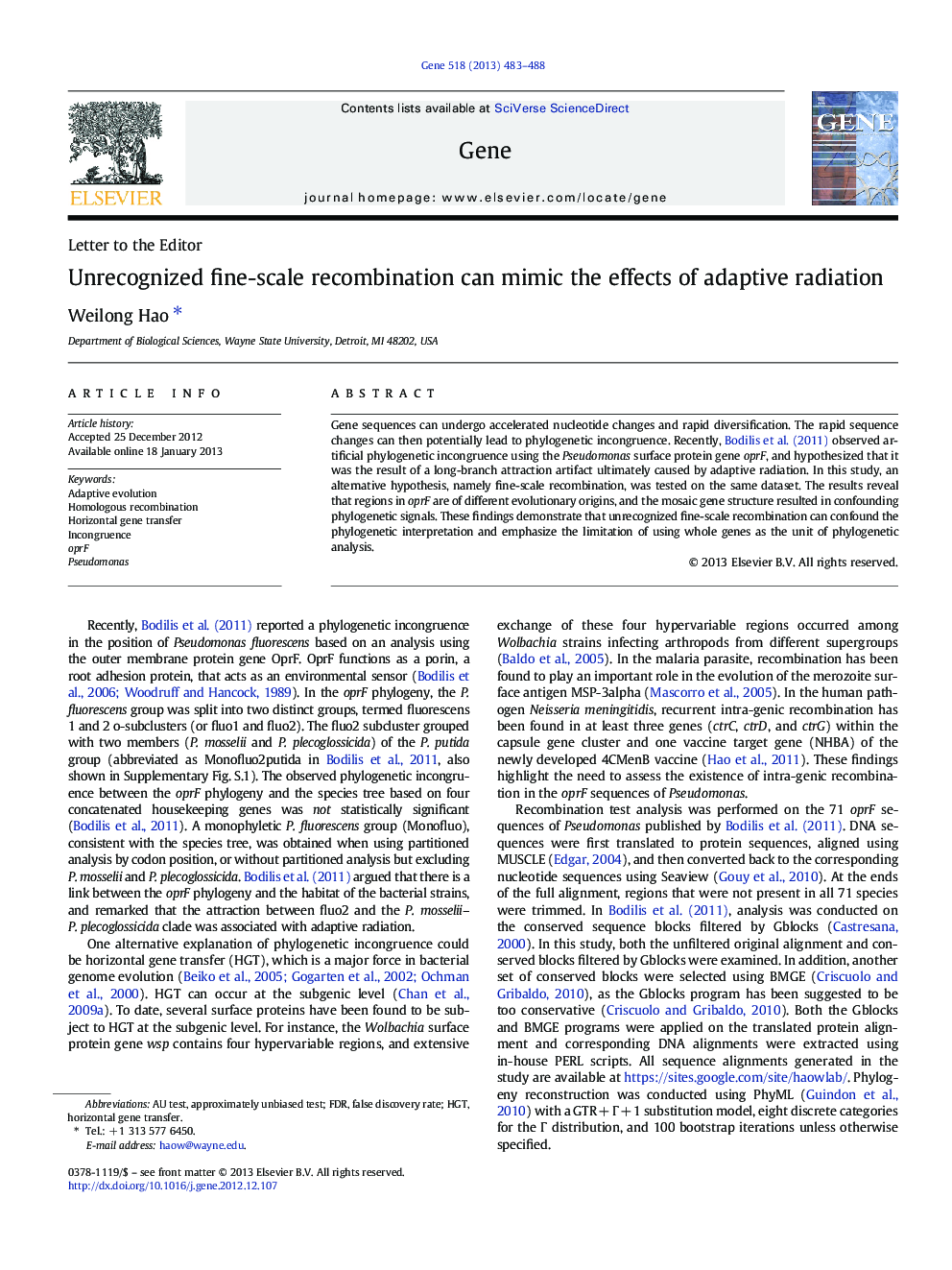| کد مقاله | کد نشریه | سال انتشار | مقاله انگلیسی | نسخه تمام متن |
|---|---|---|---|---|
| 2817399 | 1159985 | 2013 | 6 صفحه PDF | دانلود رایگان |

Gene sequences can undergo accelerated nucleotide changes and rapid diversification. The rapid sequence changes can then potentially lead to phylogenetic incongruence. Recently, Bodilis et al. (2011) observed artificial phylogenetic incongruence using the Pseudomonas surface protein gene oprF, and hypothesized that it was the result of a long-branch attraction artifact ultimately caused by adaptive radiation. In this study, an alternative hypothesis, namely fine-scale recombination, was tested on the same dataset. The results reveal that regions in oprF are of different evolutionary origins, and the mosaic gene structure resulted in confounding phylogenetic signals. These findings demonstrate that unrecognized fine-scale recombination can confound the phylogenetic interpretation and emphasize the limitation of using whole genes as the unit of phylogenetic analysis.
► A fine-scale recombination hypothesis is purposed for the oprF evolution
► Significant recombination signal is evident across the oprF gene
► Long branch attraction is not the major cause of incongruence in oprF
► Small regions often support phylogenies different from the whole oprF gene tree.
► Emphasize the limitation of using whole genes as the unit of phylogenetic analysis
Journal: Gene - Volume 518, Issue 2, 15 April 2013, Pages 483–488